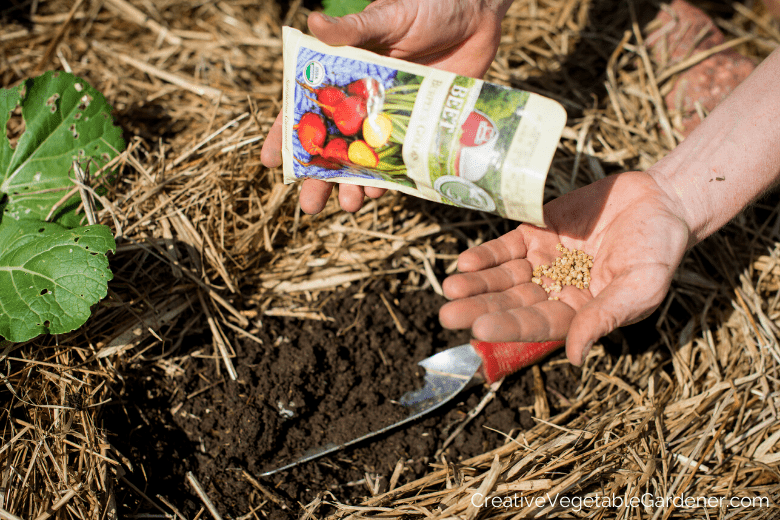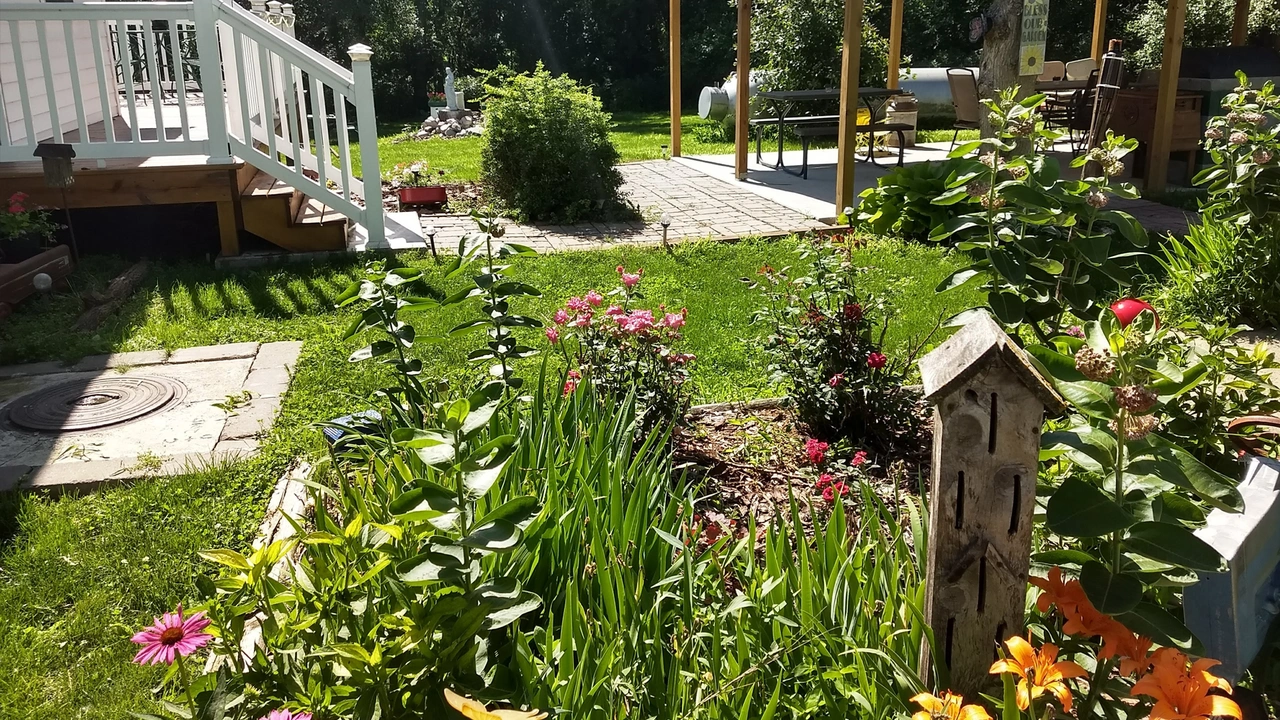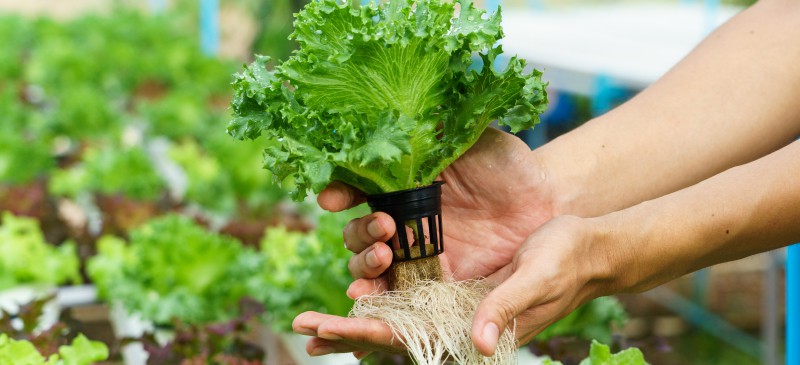No-till gardening is a gardening strategy that includes limiting soil unsettling influence by staying away from customary tilling or digging techniques. Rather than turning the soil over, no-till landscapers leave the soil undisturbed, permitting the regular construction and arrangement to stay in one piece.
The essential rule of no-till gardening is to fabricate healthy soil by advancing the development of valuable microorganisms and safeguarding the soil’s natural matter. By abstaining from tilling, the soil structure is kept up with, lessening disintegration and compaction and holding dampness all the more really.
To start rehearsing no-till gardening, begin by eliminating any current weeds or vegetation from the area you intend to cultivate in. Then, cover the soil with a layer of natural mulch, for example, straw or wood chips, to stifle weed development and shield the soil from disintegration.
Over the long haul, as the mulch separates, it will add to the natural matter in the soil and work on its fruitfulness. At the point when now is the right time to plant, just make openings or cuts in the mulch to embed your plants or seeds.
By executing no-till gardening procedures, you can make a manageable and low-upkeep garden that benefits both your plants and the climate.

Benefits of No-Till Gardening:
No-till gardening offers various benefits for the two grounds-keepers and the climate. A portion of the key benefits include:
- Soil Health: No-till gardening assists with further developing soil health by protecting the soil’s regular construction and natural matter. This advances the development of gainful microorganisms and improves the soil’s capacity to hold dampness and supplements.
- Disintegration Control: By leaving the soil undisturbed, no-till gardening lessens the gamble of disintegration. The layer of natural mulch assists with safeguarding the soil from the effect of weighty downpour or solid breezes.
- Weed Concealment: The utilization of natural mulch in no-till gardening assists with smothering weed development by impeding daylight and keeping weed seeds from sprouting. This diminishes the requirement for manual weeding and herbicide use.
- Water Preservation: No-till gardening assists with rationing water by working on the soil’s capacity to hold dampness. The layer of mulch goes about as a defensive obstruction, diminishing dissipation and keeping up with soil dampness levels.
- Time and Work Reserve funds: With no-till gardening, there is no requirement for standard tilling or digging, which recoveries time and decreases actual work. When the underlying arrangement is finished, upkeep becomes more straightforward and less tedious.
By embracing no-till gardening, you can make a more feasible and strong nursery while limiting the adverse consequences on the climate.

Methods for Executing No-Till Gardening:
Assuming that you’re new to no-till gardening or searching for certain tips to work on your procedure, think about the accompanying ideas:
- Begin Little: Start by carrying out no-till gardening procedures in a little region of your nursery. This will permit you to explore and gain from the cycle before extending to bigger regions.
- Pick the Right Mulch: Select natural mulch materials that are promptly accessible in your space and fitting for the plants you’re developing. Famous choices incorporate straw, wood chips, destroyed leaves, and fertilizer.
- Mulch Thickness: Apply a layer of mulch that is roughly 2-4 inches thick. This thickness will assist with smothering weeds really and give protection to the soil.
- Mulch Support: Routinely check and recharge the mulch layer on a case by case basis, particularly as it deteriorates over the long run. This will guarantee reliable weed concealment and soil security.
- Turn Yields: Practice crop revolution to forestall the development of vermin and illnesses in the soil. By turning your yields each season, you can keep a healthy and adjusted garden environment.
By following these tips, you can enhance your no-till gardening approach and partake in the benefits of a flourishing and manageable nursery.
Normal Confusions about No-Till Gardening:
Regardless of its various benefits, there are a few normal misguided judgments about no-till gardening.
No-till gardening doesn’t imply that you cannot plant or dive in your nursery. All things considered, it urges negligible aggravation to the soil and advances the utilization of elective gardening rehearses, for example, making establishing openings or cuts in the mulch.
While no-till gardening assists with smothering weed development, it doesn’t ensure a totally sans weed garden. A few weeds might still arise, yet they can be effortlessly overseen through normal mulch support and manual evacuation.
Building healthy soil takes time, and the benefits of no-till gardening may not be promptly noticeable. In any case, with reliable mulch application and natural matter fuse, you will steadily work on the soil’s fruitfulness and design.
No-till gardening doesn’t restrict your plant choice. You can grow a wide assortment of plants, including vegetables, natural products, blossoms, and spices, utilizing this strategy. Essentially change your mulch layer and establishing strategies in light of the particular necessities of each plant.
By getting it and scattering these confusions, you can successfully embrace and partake in the benefits of no-till gardening.
Feed the Soil, Not the Plant:
A crucial standard of no-till gardening is to zero in on taking care of the soil, not simply the plants. By focusing on soil health, you establish a climate where plants can flourish normally. This is the way you can take care of the soil:

- Natural Matter: Integrate natural matter into the soil, for example, fertilizer, leaf litter, or all around spoiled compost. This gives fundamental supplements and works on the soil’s construction and water-holding limit.
- Cover Harvests: Plant cover crops during periods when you’re not effectively developing vegetables or blossoms. Cover crops, similar to vegetables or grasses, help to forestall soil disintegration, add natural matter, and fix nitrogen in the soil.
- Mulching: Keep a reliable layer of natural mulch on the soil surface. Mulch goes about as a defensive boundary, moderates soil temperature, holds dampness, and bit by bit separates to improve the soil.
- Keep away from Compound Manures: Rather than depending on synthetic composts, utilize natural composts that nourish the soil and advance long haul soil health. This decreases the gamble of supplement runoff and limits the natural effect.
- Microbial Soil Changes: SCD Bio Ag and SCD Probioitics Mother Societies
SCD Bio Ag is a protected mix of gainful organisms in addition to their profile matured metabolites. Its strong mix to your soil populates plants’ root zones with microorganisms and their bioactive mixtures, which convert supplements into more plant-accessible forms.
SCD Probioitics Mother Societies, as ProBio Equilibrium Besides, is a fluid concentrate of useful microorganisms highlighting improved degrees of Phototrophic, Purple Non-Sulfur Microbes (PNSB), which can flourish in any climate — oxygen consuming or anaerobic. This savvy, harmless to the ecosystem probiotic mother culture advances the development of normally happening advantageous organisms, making supplements more accessible, when acquainted with any living framework.
Development advancing microbes, tracked down in SCD Bio Ag and ProBio Equilibrium In addition, can be added to establish soil to further develop generally speaking plant health. So when the two items are brought into the soil, they advance healthier, more useful soil, supporting your plants’ health and achievement.
Awful Untreated-Soil-versus SCD-Bio-Ag-Treated-Healthy-Soil
By taking on a comprehensive methodology that focuses on soil health, you can develop an economical nursery environment that upholds healthy plant development and generally garden efficiency.
Examples of overcoming adversity of No-Till Gardening:
Numerous nursery workers have encountered surprising accomplishment with no-till gardening.
No-till landscapers have announced critical expansions in their harvests over the long run. By further developing soil health and fruitfulness, plants develop further and deliver more plentiful yields. With the utilization of natural mulch, no-till nursery workers have noticed a sensational decrease in weed development. This has not just saved them time and effort yet in addition worked on the general esthetics of their nurseries. No-till gardening fans have noticed upgrades in soil structure, for example, expanded morsel construction and better water penetration. These progressions bring about healthier underground roots and worked on supplement accessibility for plants. By holding dampness all the more actually, no-till grounds-keepers have had the option to decrease their water utilization. This not just moderates a valuable asset yet in addition gets a good deal on watering costs.
These examples of overcoming adversity show the capability of no-till gardening to transform your gardening experience and make a flourishing and maintainable nursery.




